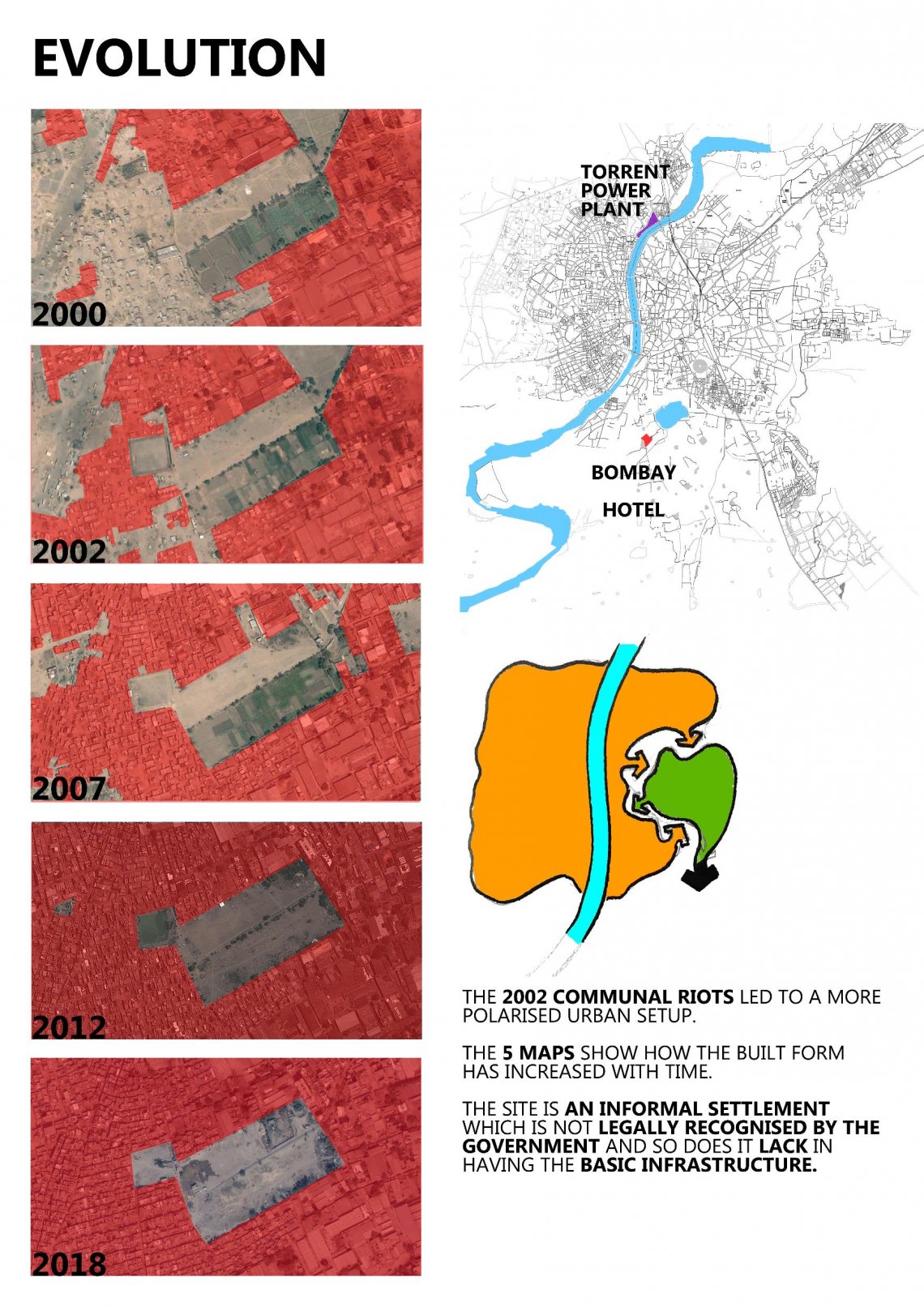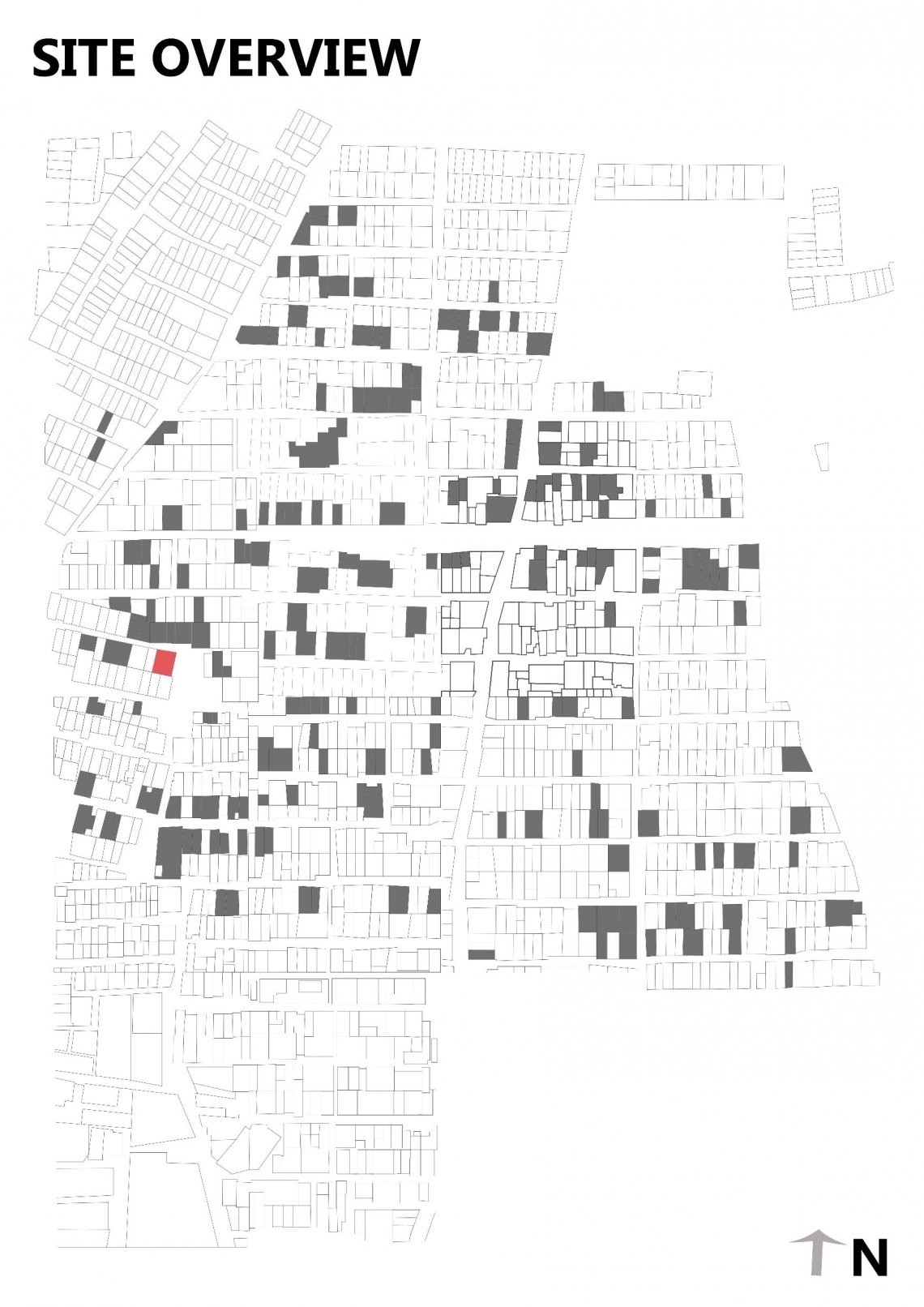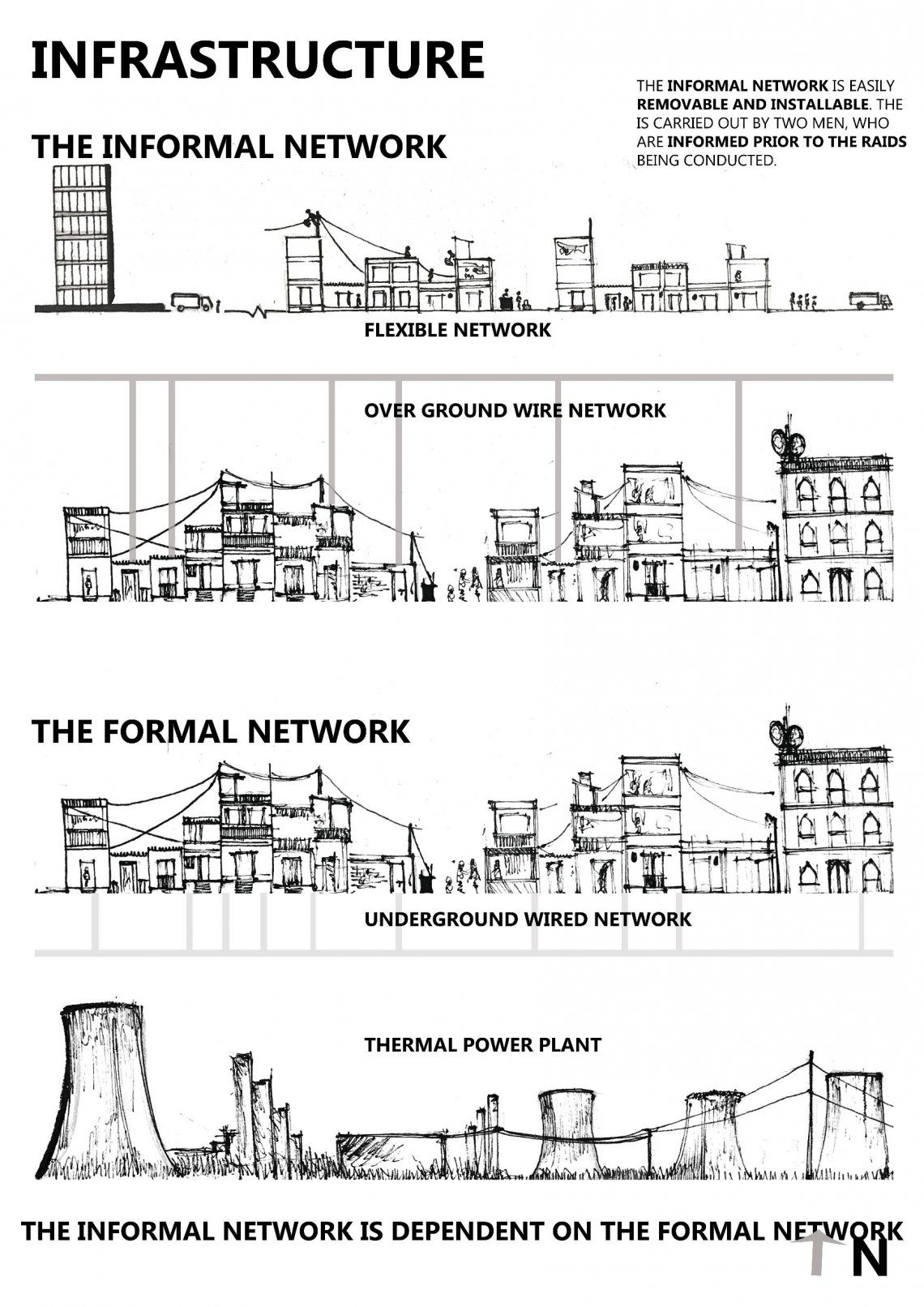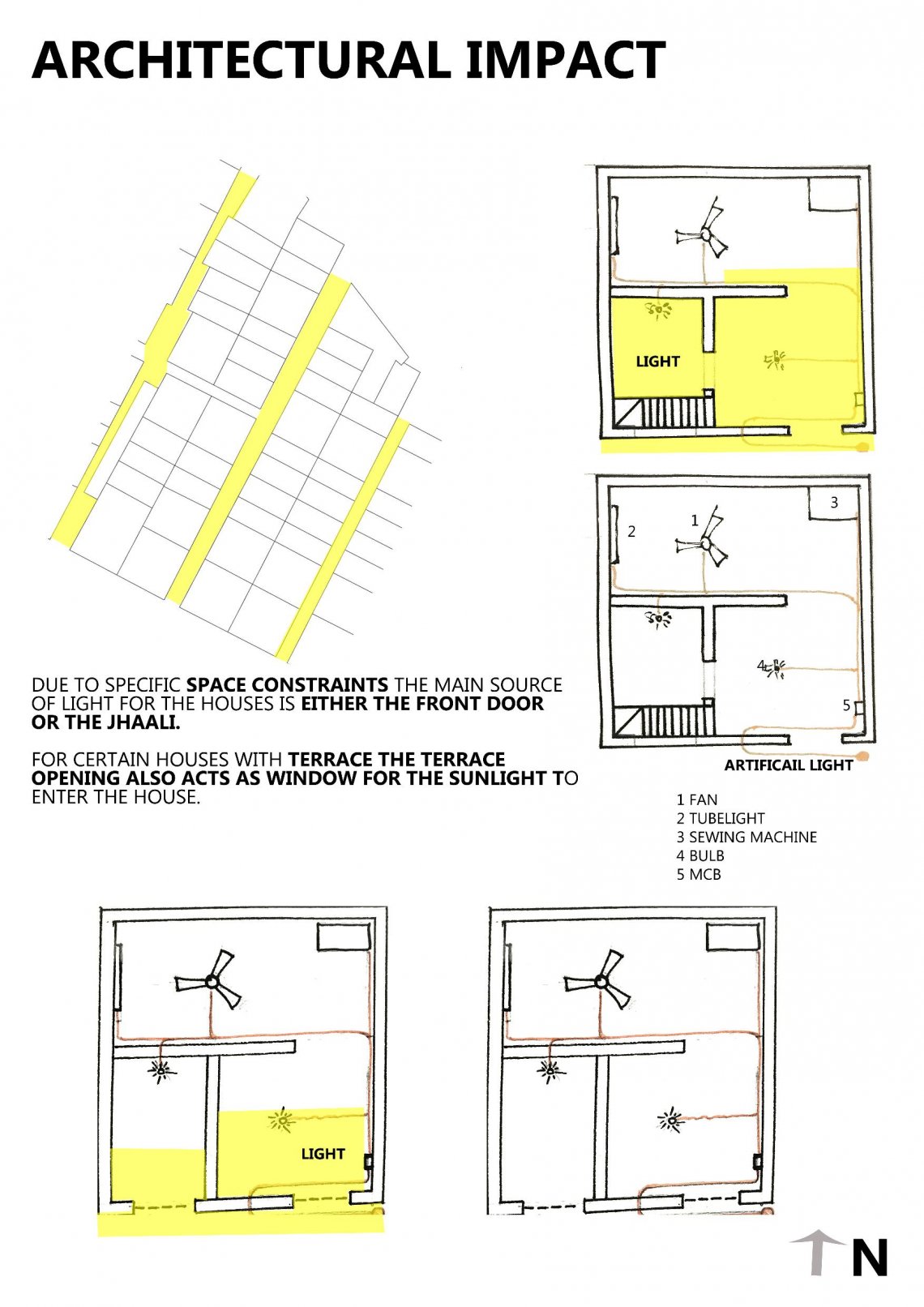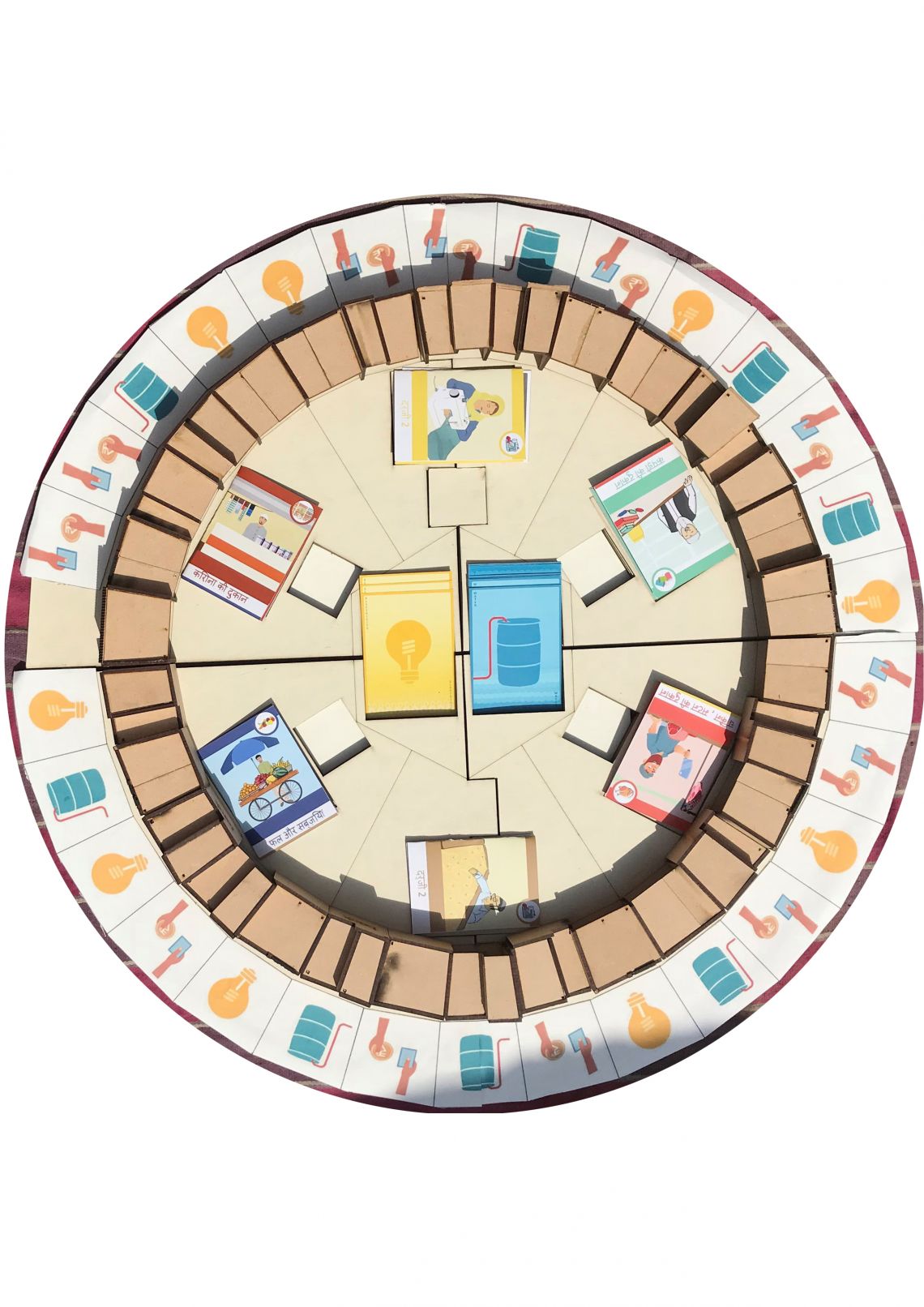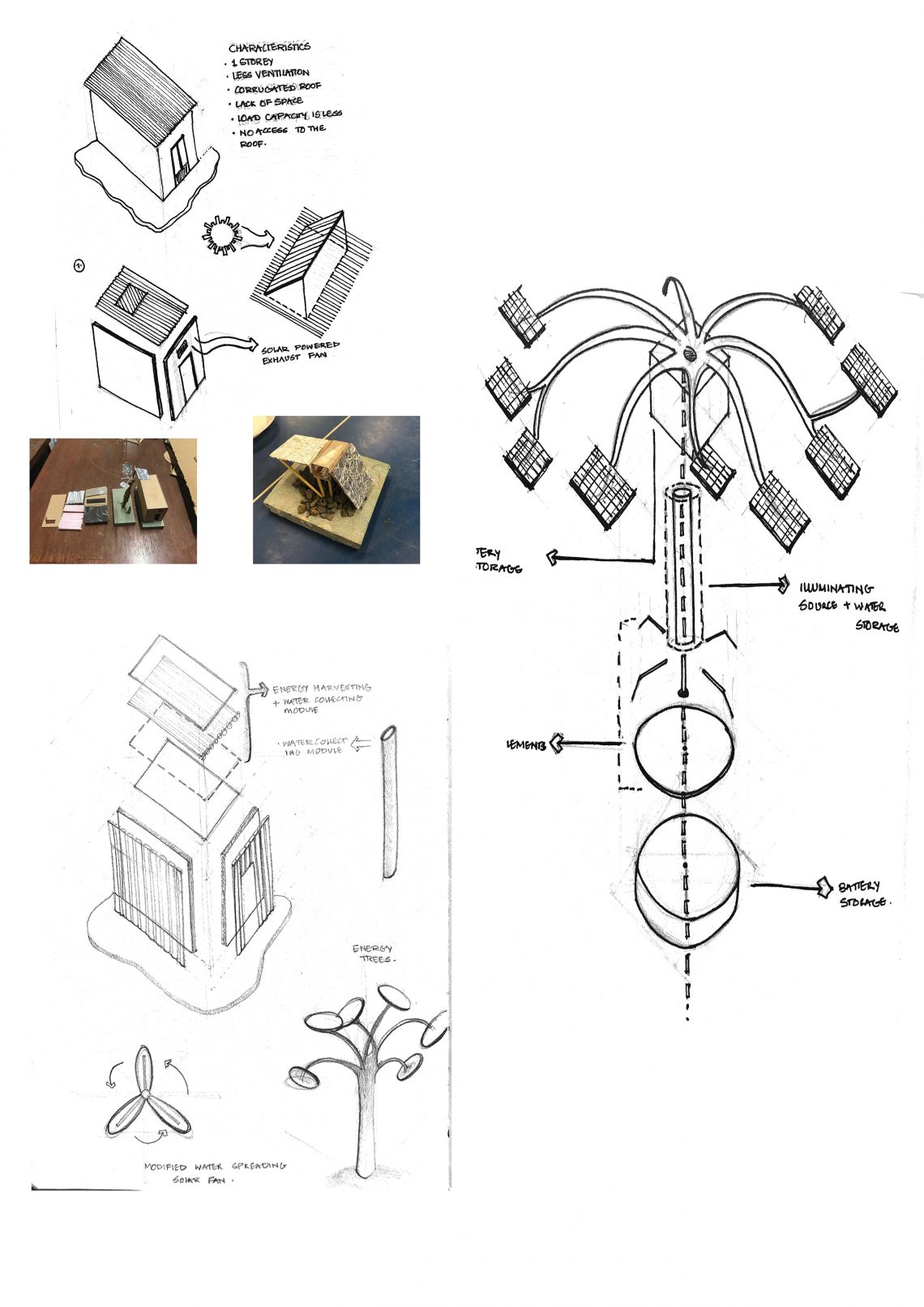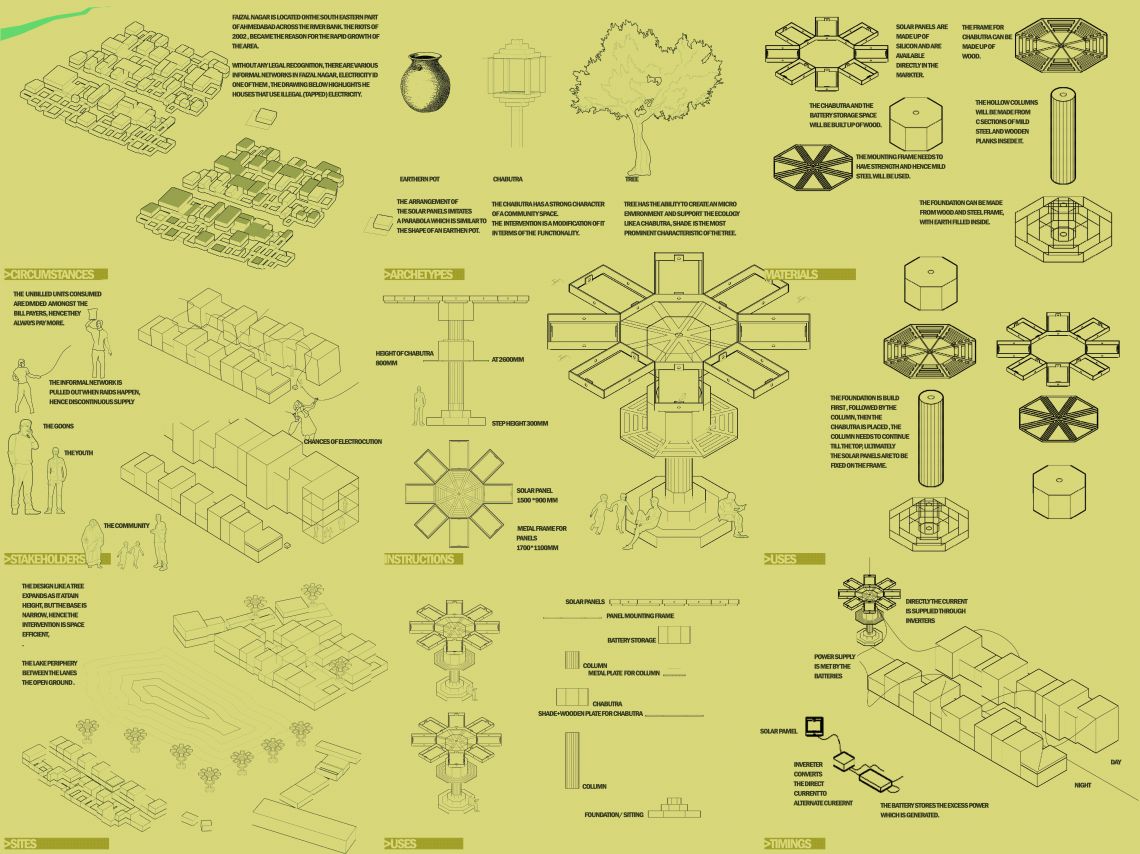Your browser is out-of-date!
For a richer surfing experience on our website, please update your browser. Update my browser now!
For a richer surfing experience on our website, please update your browser. Update my browser now!
The project and studio helps us analyze and understand the complex dependence of the informal network on the formal network. The site becomes and exceptional field where one can understand the alternative method of creating and designing. The method is frugal and aims towards the simplicity of the element which makes the product intelligible. The project aims towards making the ghetto self sufficient in producing electricity, which works on renewable principles of producing electricity. The intervention also provides shade and hence create a public space. The intervention is a mimicry of a chabutra, which tries to supports the ecology too.
